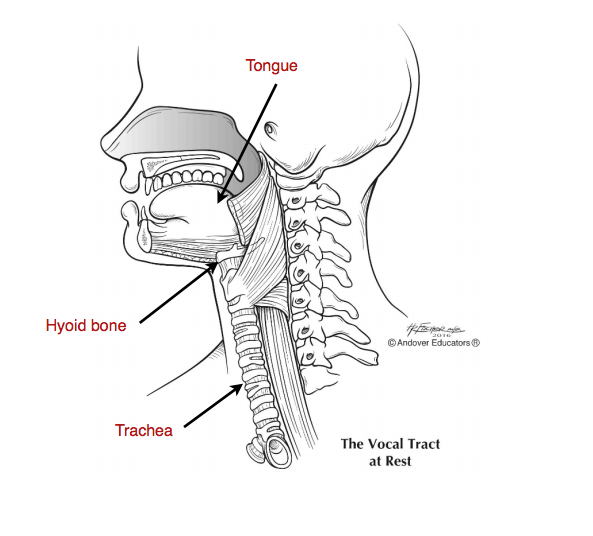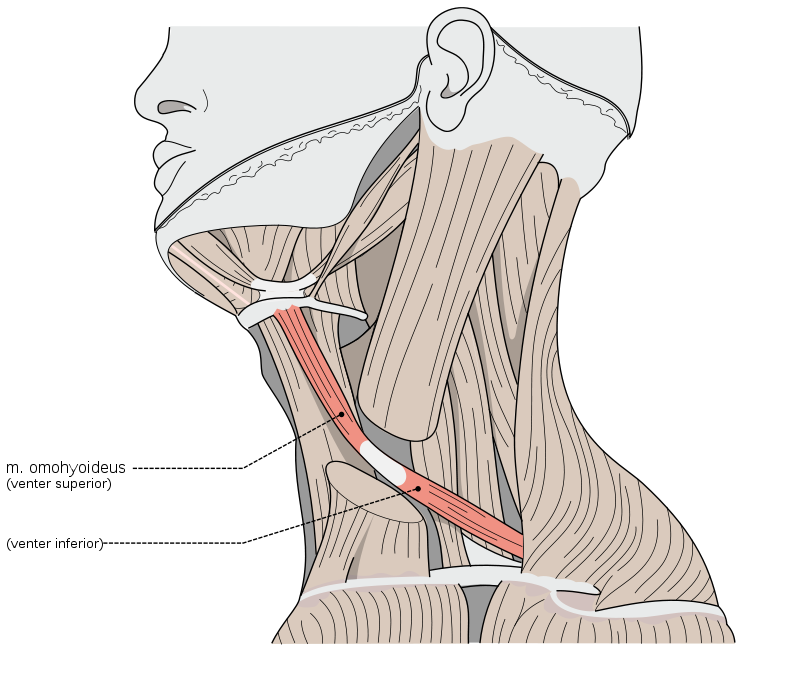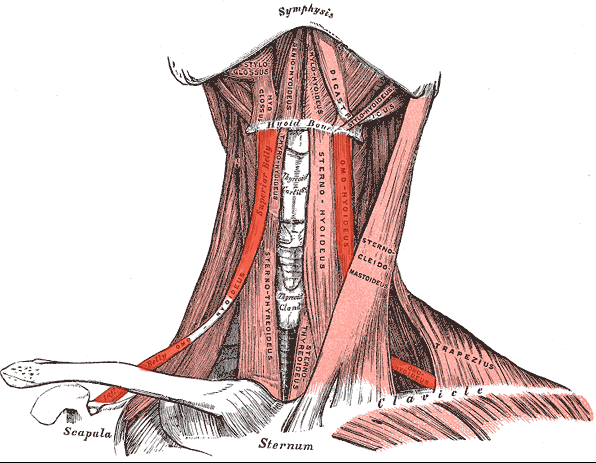photo of Lady courtesy of Meerenai Shim
https://www.meerenai.com/
1) Your tongue is made of many different muscles that work independently and in groups to do the complex things that a tongue must do for eating, speaking and flute playing. Think of a bag of fluid with constant volume. The muscles that can twist, turn, and otherwise change shape, similar to squeezing a water balloon. My students typically say, “The blob is the tongue?” Yes, students…it is.

2) Your tongue does not look or work like this.. https://www.youtube.com/watch?v=t-FC_1zhpdk. Or like this… https://www.youtube.com/watch?v=dm1iHi-38kk.
3) Because the tongue is not just one giant muscle, it is possible to move parts of the tongue separately. If flutists think the tongue is one piece, then they expect to feel the entire thing working all the time with leads to all sort of problems. Different parts of the tongue are working while double and triple tonguing — the “tt” or “dd” sound is produced with the tip of the tongue and the middle of the tongue is coming up in the back to make the “kk” or “gg” sound. Check out this fantastic video of Sarah Willis, a horn player with the Berlin Philharmonic, playing a modified horn in an MRI tube. The multiple tonguing starts around 6:30. https://www.youtube.com/watch?v=MWcOwgWsPHA This is a fantastic resource for seeing the movements of breathing and articulation, and seeing the shape change inside the mouth. Students ADORE this video.
4) The base of the tongue is right above the hyoid bone. Gently, palpate your trachea with your fingers. It feel like vacuum cleaner hose, right in the front of your neck. Move up towards your chin, passing over your larynx (Adam’s apple). You may need gently press up into the bottom of your chin. At the very top, you can find a bony thing which is your hyoid bone. It’s roughly shaped like the letter “U” with the opening side pointing toward the back. Gently swallow and you should feel your hyoid bone move forward and then back.
(Hyoid bone trivia: this is the only bone in the body that doesn’t articulate directly with another bone. Forensic pathologists check for hyoid fracture in suspected murder cases involving strangulation).
5) Because of its anchoring at the hyoid, the tongue is not entirely parallel to the floor of the mouth. The front of the throat is actually the base of the tongue. So, if you are trying to prevent movement here, you’re doing extra work.
6) One of my teachers, Barbara Conable, used to say, “The tongue is at the mercy of the muscles surrounding it.” It is impossible to have a tongue which is free of tension when head balance is off. It’s impossible to have a free tongue with a tight neck. Click here (https://thefluteexaminer.com/pain-in-the-neck/) to read “Pain in the Neck” from June 28, 2018 to find out more about head balance.
7) When we articulate on a flute, the tongue motion is the same as saying the “2”. The tip of the tongue is contacting the roof of the mouth where the top teeth hook in. Most flutists agree with this, but here’s the thing we sometimes get wrong. The motion of the tongue is forward and up, not just forward. And the sound “tuh” happens with the tongue releases, not when the contacts the area right above the top teeth. Try it and see.
8) Speech pathologists explain neutral resting position of the tongue as lips gently together, teeth slightly apart, tongue tip resting behind top teeth, and the rest of tongue falls away and down from palate. Many string players and pianists are chronically jamming their tongue into the roof of their mouth when playing. Try that and see what that feels like …. sends lots of tension into various parts of the arm structure.
9) The tongue does not push air. The movement of ribs and abdominal muscles controls the air stream.
10) The tongue does not produce sound. The air does this.
11) Consider this scenario — you’re playing an articulated fast passage with lots of notes — maybe Enesco Cantabile and Presto or maybe the first movement of the Mozart G Major Concerto. The articulation isn’t clean, so you start working harder. You move your head forward, closer to the music. You pull your arm structure forward. And the articulation gets worse and worse. Why, oh why is this so? First, what you’re doing with your head matters to what’s happening from your tongue. The hyoid bone is partially suspended from your skull through digastric muscles. Second, there is, in fact, a direct muscular connection between your arms and your tongue and it’s called the omohyoid. You have one on each each side and they run from the hyoid bone to the inside of your shoulder blade. “Omos” means shoulder in Greek. The omohyoids’ job is to depress the tongue. So, we’re trying to articulate and simultaneously holding our tongue down. Much of the omohyoid is too deep to palpate, but you can feel the horizontal fibers. Gently place your left hand slightly above the middle of your right collarbone. With your right hand, prevent your jaw from opening. So you right hand is pushing up and your jaw is trying to come down. You’ll feel some horizontal fibers tighten up under your hand.
With an improved understanding of the shape and location, as well as the movement possibilities of your tongue, you are now empowered to make changes to eliminate tongue tension, lighten up on heavy articulation, and smooth out the rough edges in your double tonguing. Honoring the connections between your head, your arms, your air and your tongue contribute to mastering articulation.




Outstanding article, Meerenai!! This is the clearest and most precise analysis of how our tongue works I have ever read. The “11 Things” you give us are needed presents for which we owe you a big
“Thank You!”
actuallly, I think Meerenai contributed the dog picture. The author of this article is Kelly Wilson. I agree, GREAT article!
This is Kelly – I wrote the article! Meerenai is Lady’s owner and graciously shared the photo with me to put at the front of the article. I’m glad you found the information useful!
[…] The Flute Examiner (Kelly Wilson): 11 Cool Things About the Tongue […]
Thanks, Kelly, for writing this very helpful article with a great dog picture.
[…] pause here and go read the article “11 Cool Things About the Tongue” in the April 2019 edition (https://thefluteexaminer.com/11-cool-things-about-the-tongue/) . Anybody ever had a teacher give you feedback about “tongue tension?” What’s that all […]
Hello Kelly;
I a a physiotherapist who loves the detail in your cool things about the tongue article. Can you answer this for me please?
I have tendency to retrodental front teeth (moving inward) and had to stop beginner clarinet because after 6 mos of playing it broke the bar in front of my 4 front teeth that was holding things post braces. Dentist said no reed instruments for you. I was gutted as I loved learning and listening to what came out of clarinet. I would faithfully practice daily and getting better after 6 mos, then had to stop and actually get new braces again as the teeth kept moving inward?
Will the flute be pushing my teeth more outward in repetitive stress? I would love to restart a wind instrument as the feeling of working diaphragm and the rest of it was delightful.
Can you offer an opinion about flute playing NOT pursing upper lip to push teeth inward over time (and with teeth that want to be “rat teeth” . Cheers, Cindy
Hi Cindy, I have never had a dentist or orthodontist discourage any flute playing in any of my students. I have had multiple kids have to stop clarinet because they had expanders on the top. There should be no pressure on top teeth at all, other than contact from the lip. The headjoint should be contacting on the gum, below the bottom teeth and there should not pressure directed towards the jaw. Hope this answers your questions. There is another article about braces that has some more teeth info included, it’s in October 2019 issue.
Kelly
Hi Kelly! I wonder if you have a good explanation to this: For some years I’ve been noticing when I move my left tumb and hand, there is a small muscle under my tongue that moves. I can see it quite clear. Have you ever heard about something similar?
Hi Monica, I have never heard of this before. Does a similar thing happen when you move the other side thumb and hand?
Kelly